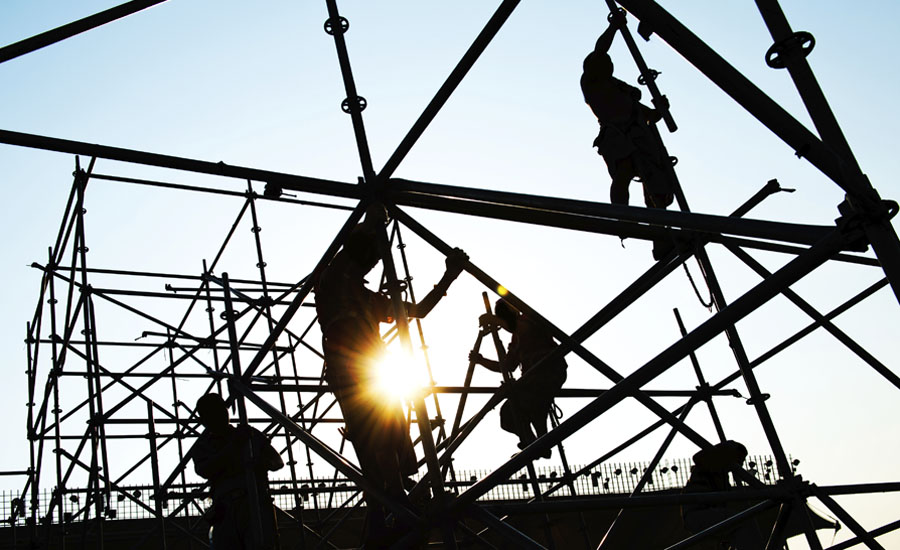ISEA 121, Dropped Object Prevention Solutions will circulate for consensus approval and public review by end of 2017 with expected publication of a final, approved standard at end of 1Q 2018.
In 2015 there were 519 fatalities from being struck by an object or equipment in the United States, and 247 were caused by a falling object, according to the Bureau of Labor Statistics.
Dropped objects can include hand tools, instrumentation, small parts, structural components and other items that have to be transferred and used at heights; and the implications from struck-by injuries can range from inconvenience or loss of productivity to life-altering injury or death. This is especially important in oil and gas, construction, energy and telecommunications infrastructure, shipping operations and aviation industries, where elevated work areas are common.
In response, ISEA and leading safety equipment manufacturers including Ergodyne, 3M Safety, Guardian Fall Protection, Hammerhead Industries, Radians, Ty-Flot, and West Coast Corporation have joined together to standardize the solutions available to protect workers from objects falling from heights. These objects include hand tools, instrumentation, small parts, structural components and other items that have to be transferred and used at heights. The implications from struck-by injuries can range from inconvenience or loss of productivity to life-altering injury or death. This is especially important in oil and gas, construction, energy and telecommunications infrastructure, shipping operations and aviation industries, where elevated work areas are common.
The objective is to provide employers with a document, ANSI/ISEA 121 Dropped Object Prevention Standard, that establishes minimum design, performance, and labeling requirements for solutions that reduce dropped objects incidents in industrial and occupational settings. An industry first, the proposed standard will focus on preventative solutions actively used by workers to mitigate these hazards, and testing of these solutions.
“This standard will provide employers with important guidance on how to minimize the risk of dropped object incidents. That’s an important part of any safety program,” said Nate Bohmbach, Associate Product Director, Ergodyne and Chair of ISEA’s Dropped Object Prevention Group.
ISEA 138, Performance and Classification of Impact Resistance Hand Protection, is still undergoing internal development and ISEA expects this process to be completed by end of 2018.
This is being pursued as a stand-alone document rather than as added content to the ISEA 105 hand protection standard.
According to ISEA, Glove suppliers and workplace safety experts recognize that impact hazards can cause injuries to the fingers, knuckles and bones in the back of the hand. Many suppliers, such as D3O approved brand partners, Superior Glove, Mechanix, MCR Safety and Majestic, are offering gloves with features designed to protect wearers against these injuries, but to-date there are no uniform tests to evaluate gloves for impact protection. The ISEA project will focus on developing industry-accepted test criteria to measure the reduction of peak impact force across the hand, and a set of classifications to enable users to select gloves suited to their work environments.
Global Sales and Marketing Manager, Rodney Taylor, who leads D3O’s Industrial Personal Protective Equipment (PPE) business, explains:
“In North America, there are really no government mandated performance standards in place, like we see in some other regions of the world with large volume PPE consumption. The result is that safety professionals are faced with the daunting task of wading through thousands of different products – all with different performance claims – to select the appropriate PPE for their workers.
“For impact protective gloves, performance can vary widely by manufacturer. Yet, without a performance standards infrastructure in place for impact protection, there is no reliable means of making comparisons between different products on an equal basis.
“Standards provide an objective means of evaluating performance and reduce complexity in the purchasing process. But, in a voluntary standards compliance environment like the US, manufacturers will only produce products that meet standards if there is demand from end users. So there is a burden on PPE purchasers to request products from the value chain that meet specific standards.”
ISEA 203, Secondary Single-Use Flame Resistant Protective Clothing for Use over Primary Flame Resistant Protective Clothing has undergone consensus balloting and public review and is expected to publish as a new American National Standard by end of 1Q 2018.
ISEA Z87.62, Eye and Face Protection Used Against Biological Hazards is being developed by the Accredited Standard Committee Z87, for which ISEA is the Secretariat. Development is expected to be completed in 2019.

